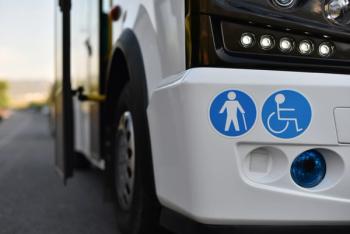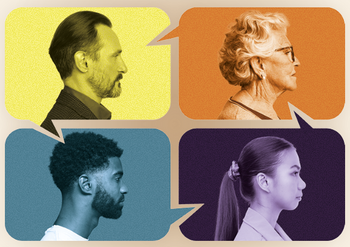
- MHE July 2023
- Volume 33
- Issue 7
Is Telehealth Leaving Some Patients Behind?
Researchers who analyzed telehealth for patients at federally qualified health centers document problems with everything from broadband access to digital literacy to poor translations.
A year before the 2020 COVID-19 pandemic closed many doctor offices, only 5% of patient visits were conducted via telehealth — then the pandemic hit. By early 2022, the number of office-based doctors using telemedicine increased six-fold to 87% and accounted for 70% of all appointments, the Office of the National Coordinator for Health Information Technology reports.
As the pandemic eased up, telehealth visits began to fall. Today, roughly 1 in 4 patient visits are telehealth visits, according to a practice management article posted on the American Medical Association’s website. Although that is a dizzying decline from its 2020 peak, it is still 20 percentage points higher than before the pandemic started.
Telehealth has the potential to remake the U.S. healthcare system by providing access to underserved areas and populations. It’s efficient and convenient, as an appointment can pretty much take place anywhere that has an internet connection — your home, your office or even your car. A telehealth visit is often easier, quicker to schedule and is “strongly associated with fewer missed appointments,” according to research published in Preventive Medicine Reports in 2021.
FQHC reports
However, two recent reports about telehealth at federally qualified health centers (FQHCs) are a reminder that the adoption of telehealth is uneven and runs the risk of leaving some people who have been traditionally underserved by U.S. healthcare even more so behind. To fulfill its promise, telehealth will need significant investment from federal and state governments, healthcare organizations, telecommunication companies and health insurers. The money would pay for building more broadband and internet connections in rural areas, poor neighborhoods in cities and the suburbs. There is a need for platforms that address health and digital literacy and language barriers. The price of data plans looms as a major obstacle for many U.S. residents.
“As health systems increasingly rely on technology-facilitated care beyond the pandemic, patients with limited access to technology and low levels of digital literacy face disenfranchisement from their providers,” wrote Antoinette Schoenthaler, Ed.D., a professor of population health and medicine at New York University’sGrossman School of Medicine, and her colleagues in April in a Health Affairs blog post.
Schoenthaler and her colleagues studied the implementation of a technology-facilitated team care model for remote patient monitoring of improved hypertension at a large FQHC in Brooklyn, New York. They found numerous examples of “the double-edged sword of digital tools.”
“Many patients and clinical staff report that the digital requirements of RPM (remote patient monitoring) are extensive and cumbersome, making it difficult to extend its benefits to patients with limited digital access and literacy,” they wrote. “Thus, even patients with the digital readiness to perform RPM tasks and engage in virtual coaching can be restricted by inadequate data plans.”
The NYU researchers report that the FQHC staffers had to help patients find, download and use the RPM apps on their phones. Even then, the study observed, patients lost their passwords and got locked out of their accounts.
Privacy concerns
On the other side of the country, researchers at the University of California, Irvine, took a broader overview of telemedicine at two FQHCs. They wanted to know what would happen to the telehealth services at FQHCs once they reopened their in-person services.
“There’s uncertainty around whether they would continue and maintain it and whether there was interest on the supplier side and the consumer side,” says Denise Payán, Ph.D., lead author of the study published in SSM-Qualitative Research in Health and an assistant professor in the Program of Public Health at UC Irvine. “How do they offer it in tandem with and as a complement to in-person visits? That’s where I’m seeing healthcare organizations trying to figure out (whether) it doesn’t work (or) it works really well.”
The team found that older adults and those with limited English proficiency were uncomfortable using a patient portal or unfamiliar technology. They often chose a nonreimbursable, audio-only appointment. Translations were not always accurate.
“I am a Spanish speaker, and I read some of the translations,” Payán says. “And it didn’t make sense to me, so I think there is this piece of digital literacy, language interpretation and translation, where you have to give people instructions on how to actually use these platforms, and (use them) well.”
Patients reported being flustered when a telemedicine session was suddenly dropped or the screen was frozen. And, as in Brooklyn, the responsibility of teaching patients about the technology fell to the clinic’s front desk personnel, nurses and physician assistants.
“If you have people who have lower digital literacy and/or resource constraints, such as not having access to broadband internet, or they have inconsistent access for people who are homeless, that was a huge issue,” she says.
Then there is the issue of patient privacy for people who are homeless or living in a crowded house. “Where would they go to have a visit?” Payán asks. “Is there a private space? In an in-person visit, you have that closed patient room with your provider and can have those conversations with closed doors and the four walls.”
Beyond these practical problems, researchers are starting to tackle fundamental questions, such as when might a telehealth appointment be inappropriate and when might it degrade the quality of care. Take remote monitoring, the issue that bedeviled staff and patients at both the Brooklyn and California FQHCs; even if government and the other stakeholders invest in building broadband, dependable internet connections and more affordable data plans, that is just one part of the equation. To get accurate and useful medical measurements — blood pressure, glucose, heart function — patients need to navigate the technology correctly. “How do you incorporate telehealth modalities that are high quality and appropriate?” Payán asks. “The jury’s still out on mobile monitoring.”
Website manner
Additional studies will be needed to explore these issues. For now, however, healthcare professionals can look to specialties like behavioral health and chronic care management, where telemedicine has so far been well received.
“We really need to pay attention to more standardized clinical outcomes and clinical effectiveness research around chronic care management,” Payán says. “Those are some of the studies we are still looking at using big data — the outcomes of individuals with chronic illnesses, such as hypertension and type 2 diabetes, and people who were using telemedicine for the first time — and comparing (their outcomes) before, during and after the pandemic.”
Physicians today are trained to treat the patient physically sitting in front of them. The doctor can study the patient, read their body language and pick up other physical clues. Over video, those clues are less evident or missing. Going forward, Payán says, doctors will have to make that adjustment, especially those who are younger.
It’s going from a bedside to website manner, Payán explains. “It’s new and novel, so if people have more experience and it’s incorporated ideally into training … the platform will get better and you won’t lose as much (quality).”
Robert Calandra is an independent journalist in the Philadelphia area and a frequent contributor to Managed Healthcare Executive.
Articles in this issue
over 2 years ago
Insomnia and its Harmsover 2 years ago
Healthcare and Climate Changeover 2 years ago
4 Important Approvals Expected This Yearover 2 years ago
The Humira Biosimilar Gold Rush is Onover 2 years ago
‘Deidentified’ Health Data Not So Deidentified After AllNewsletter
Get the latest industry news, event updates, and more from Managed healthcare Executive.





















































